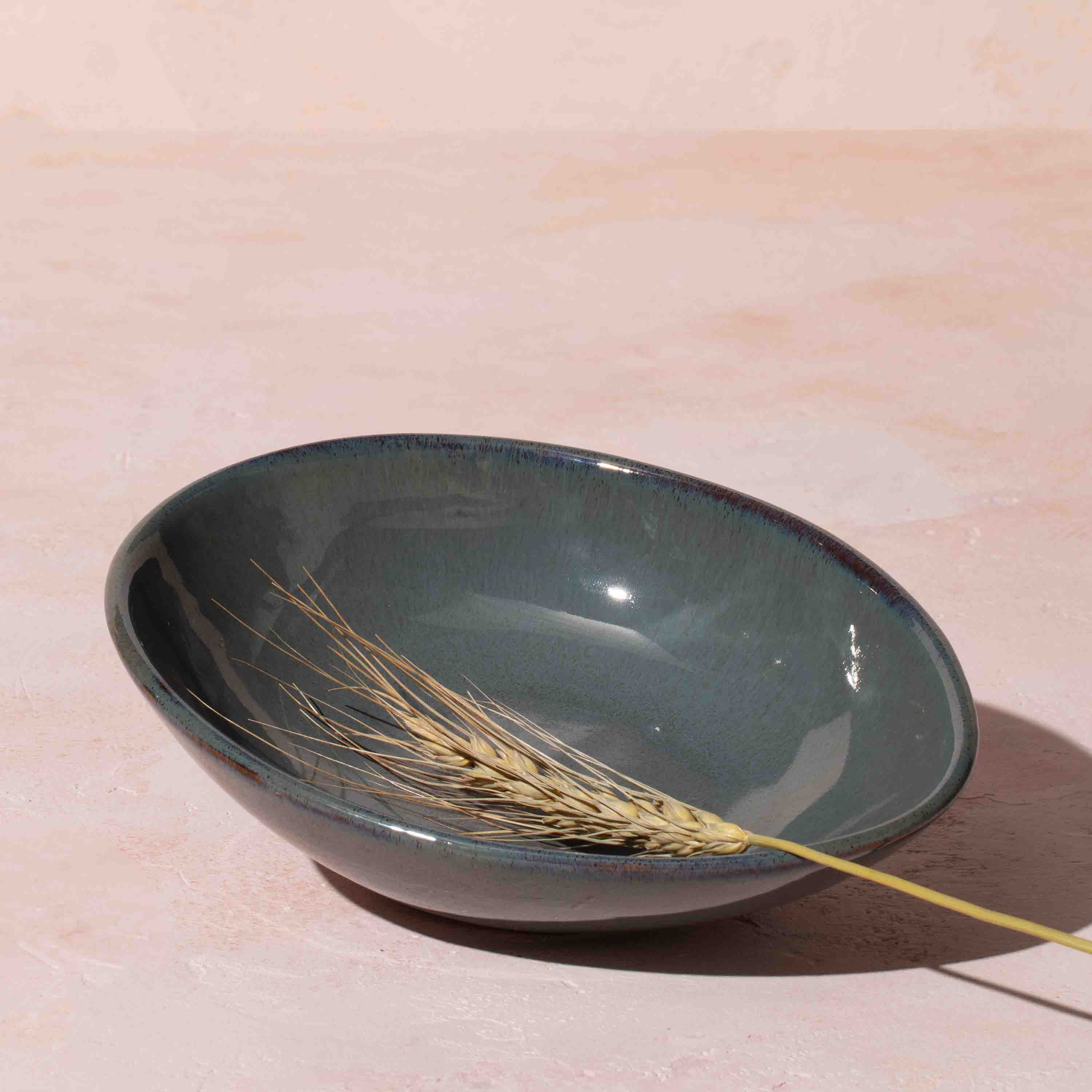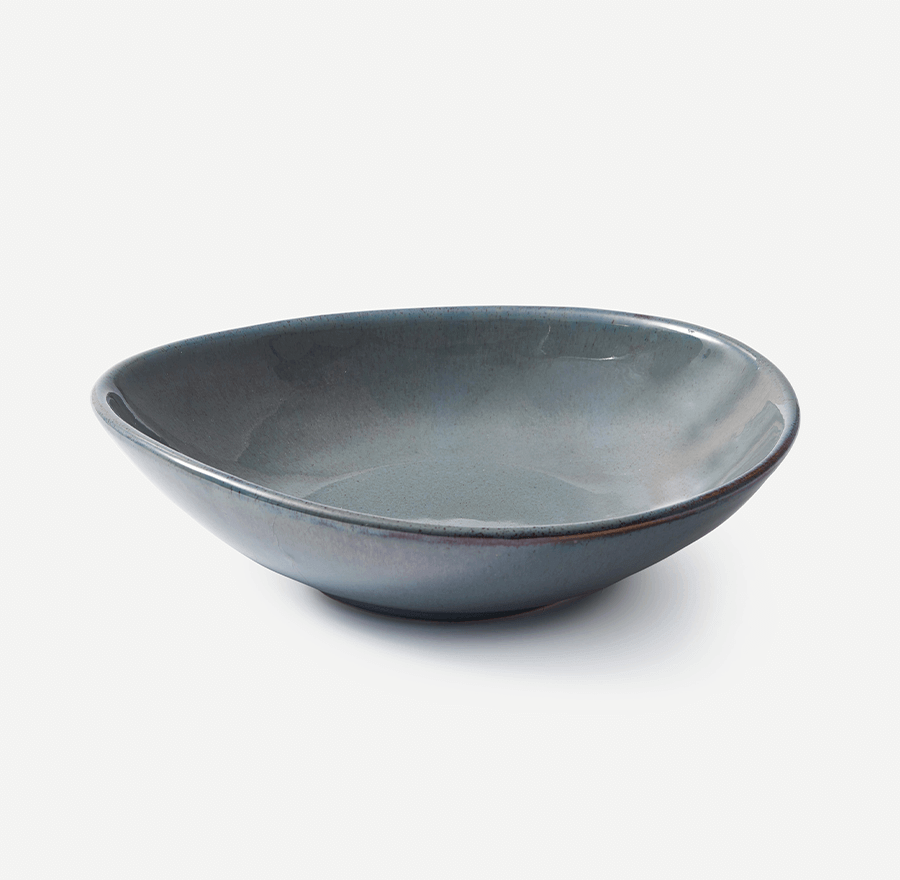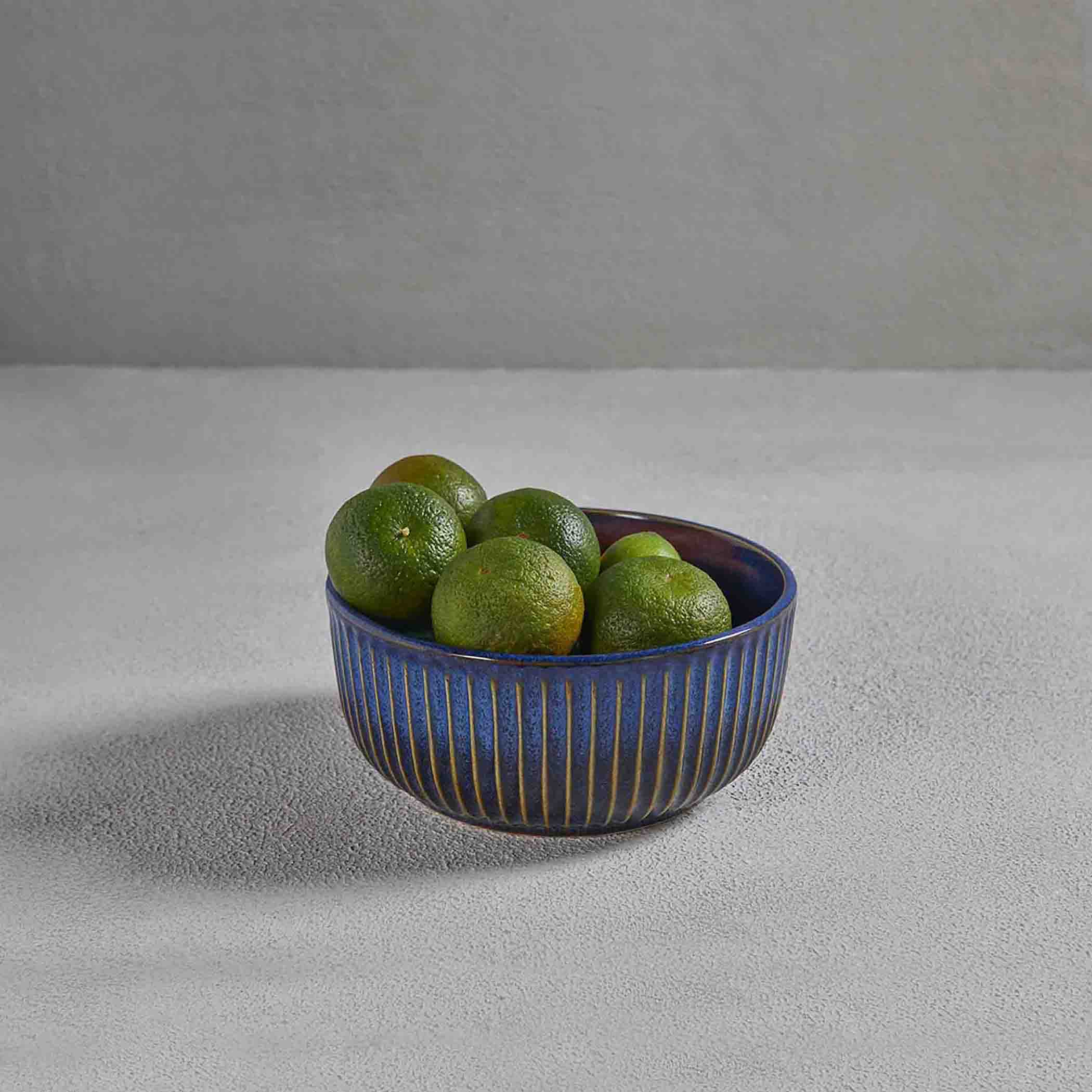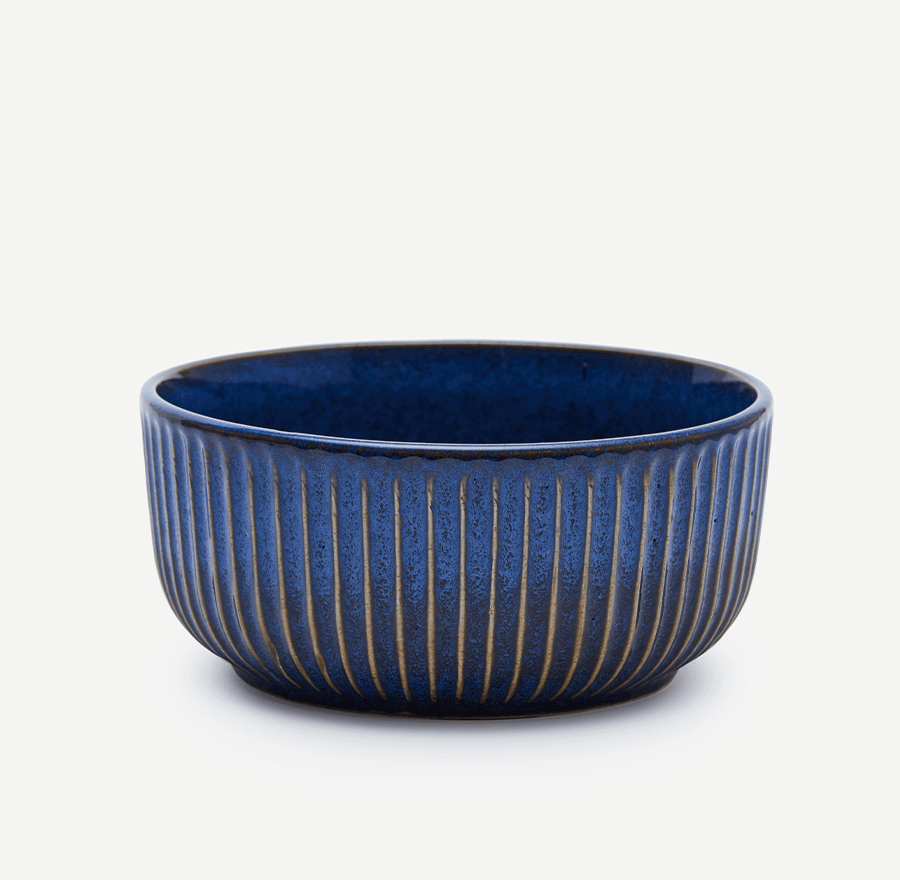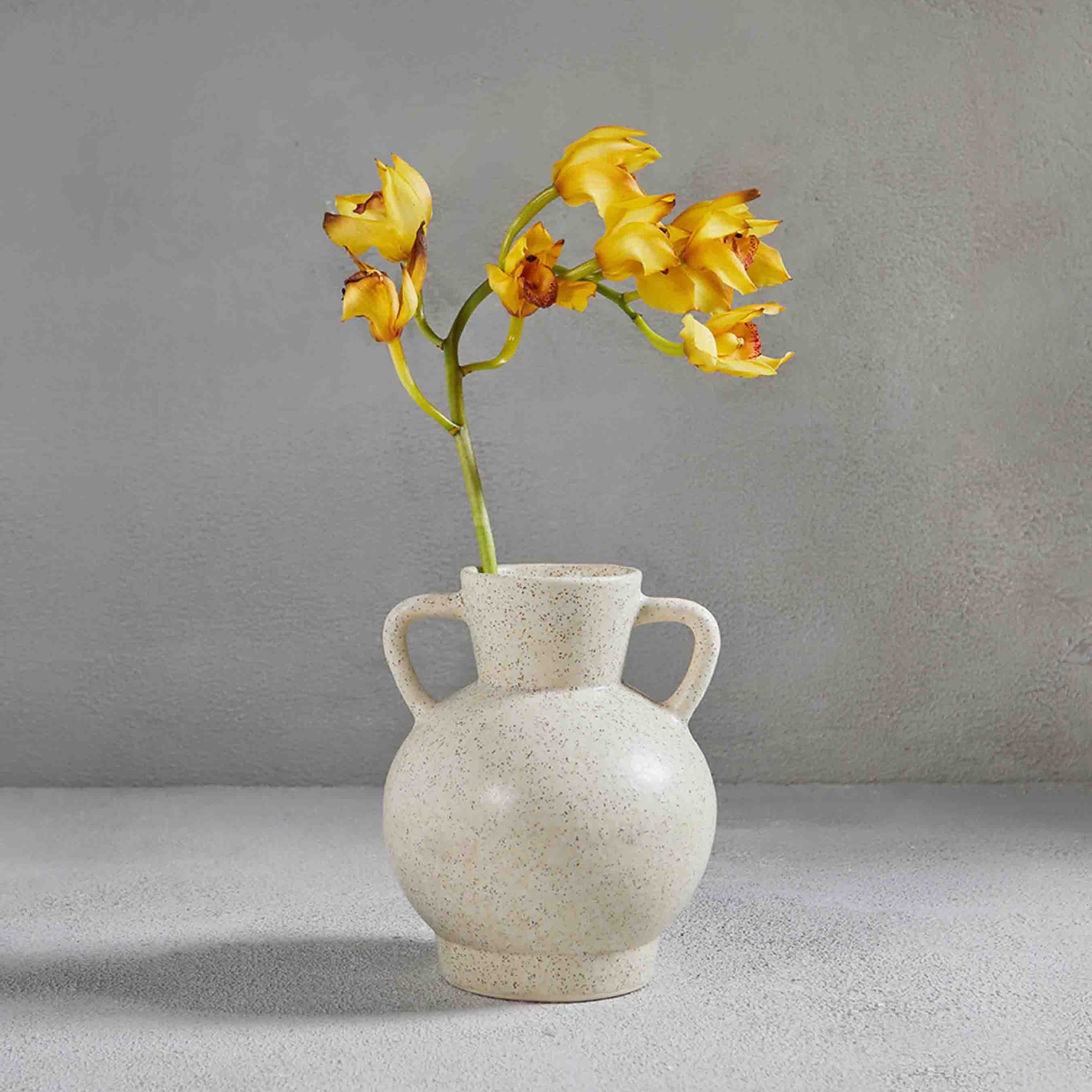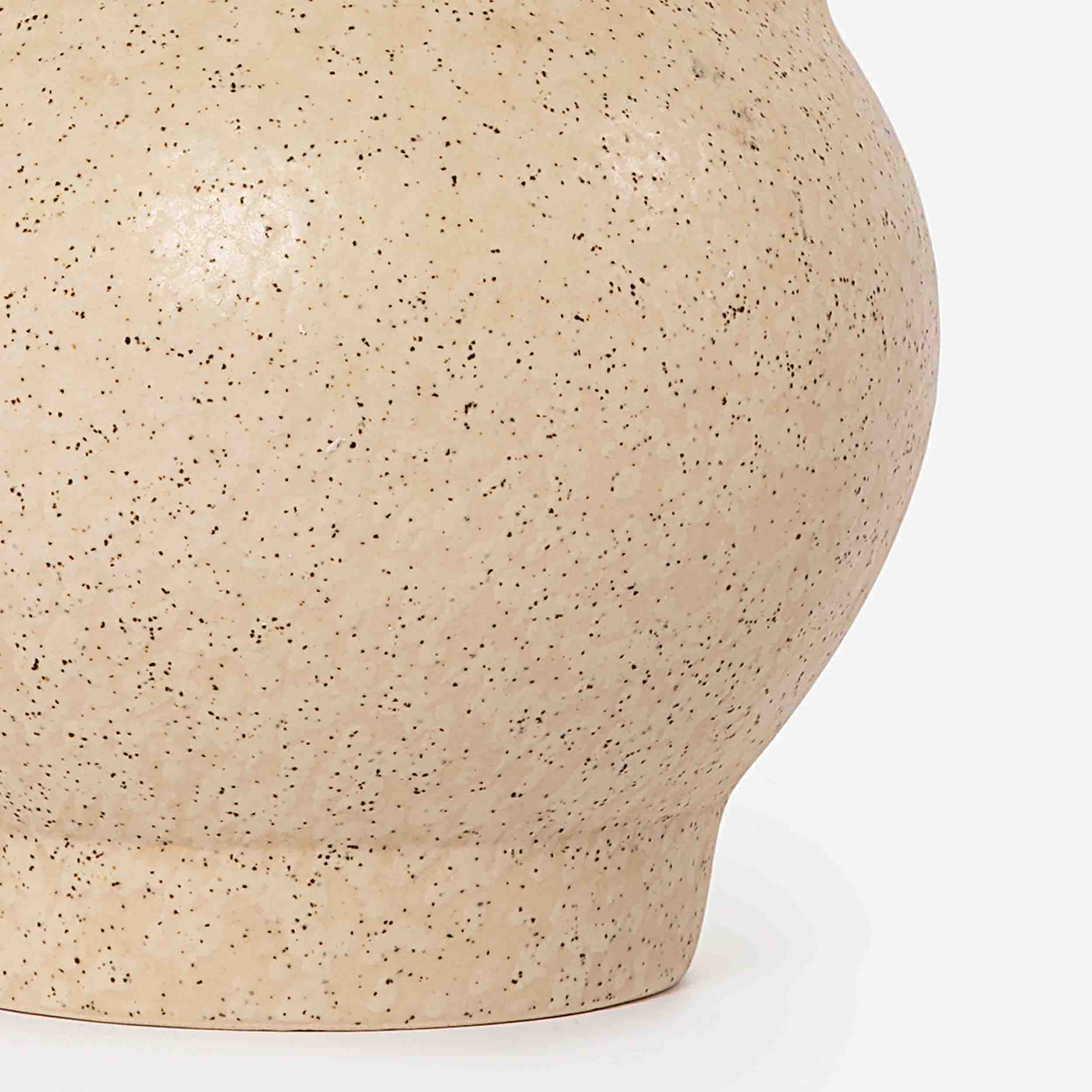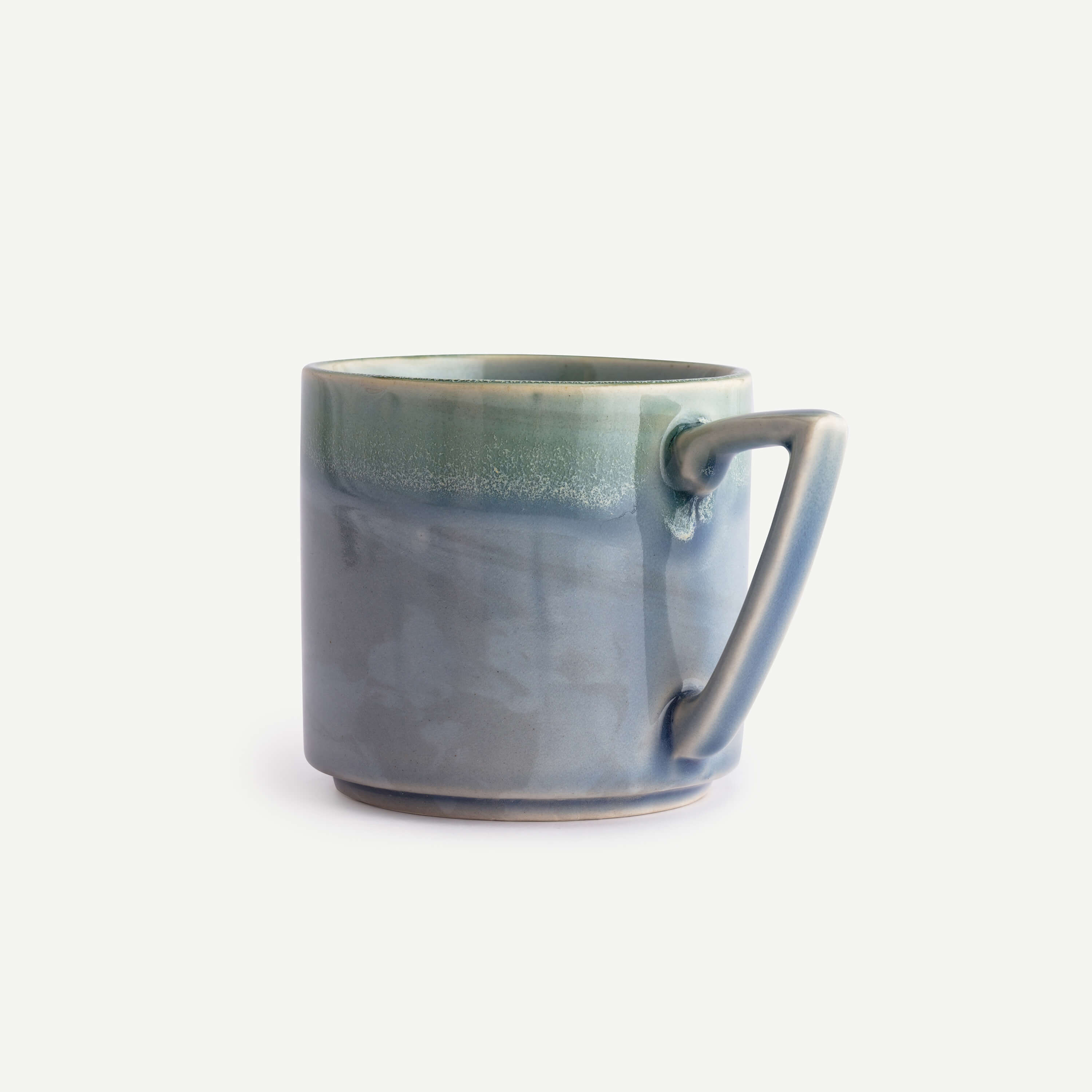IRIS PETITE PLATES
A plateful of prosperity served on the circle of gold. Mesmerising all wanton hands, who break bread on an elegant stone.
A plateful of prosperity served on the circle of gold. Mesmerising all wanton hands, who break bread on an elegant stone.
Craft Type: Studio Pottery
A craft inspired by a ubiquitous yellow vessel found in Indian kitchens, colloquially known as the Barni, Jaddi, Kola Jaadi, Bharnai or Jaadeelu. Our artist from Auroville has used her fond memories of watching a wise matriarch carefully store handmade pickles in off-coloured mustard jars to create tableware. Her pieces invoke the same feeling of quiet contemplation experienced while waiting for the pickle to cure in a quaint corner of the verandah. We mould the essence of the venerated Barni, into exquisite stoneware, with each piece manifesting a distinct mustard glaze.
This product is handcrafted and slight variations in colours, textures and forms are to be expected.
Made in: Auroville
Material: Stoneware
Dimensions (cm): 13(L) x 13(B) x 2.4(H); Dia: 13
Dimensions (inches): 5.1(L) x 5.1(B) x 0.9(H); Dia: 5.1
Weight: 195 grams
No. of pieces in a set: 1, One Stoneware Plate
-Many kinds of clays are available for this kind of pottery but our studio potters from Auroville and Shantiniketan use ball clay since it is found in abundance around them and can be treated very easily. This clay is carefully prepared by our potters using exact proportions.
- Kneaded to perfection, the prepared clay is then mounted on the potter's wheel.
- Where our craftsmen give it a shape using traditional hand-building techniques.
- Once the shape is ready it's fired in a bisque powered by local fuel.
- After the shape solidifies, it's glazed to give it a natural sheen.
- Once ready, the piece is left to dry under the sun for 2-3 days.
- On drying, this piece is glazed by dipping, trailing or brushing on a thin slurry composition of the glaze and water and then it's fired in a bisque.
- The colour of the glaze changes significantly before and after firing.
- Please note that the process of glazing renders porous pottery vessels impermeable to water and other liquids, thereby increasing their shelf life.
DO:
- Soak a soft sponge in tepid water, apply mild detergent and gently rub your vessel clean.
- Then wipe your stoneware dry with a clean cloth, this helps to retain its natural finish.
- Make sure to wash each vessel separately by hand.
- Use only a soft cloth or tissue to clean your vessel dry.
- Make sure to put a cushion of tissue/cloth between each product while stacking.
- You can safely use these products to serve food and beverages.
- These vessels are microwave safe, so you can heat conveniently yet eat traditionally.
DON'T:
- Stack these fragile vessels against each other while washing or storing.
- Use a dishwasher to wash or rinse the products.
- Use items with a gold inlay in a microwave.
- Description
- Process & Craft
- Care
Craft Type: Studio Pottery
A craft inspired by a ubiquitous yellow vessel found in Indian kitchens, colloquially known as the Barni, Jaddi, Kola Jaadi, Bharnai or Jaadeelu. Our artist from Auroville has used her fond memories of watching a wise matriarch carefully store handmade pickles in off-coloured mustard jars to create tableware. Her pieces invoke the same feeling of quiet contemplation experienced while waiting for the pickle to cure in a quaint corner of the verandah. We mould the essence of the venerated Barni, into exquisite stoneware, with each piece manifesting a distinct mustard glaze.
This product is handcrafted and slight variations in colours, textures and forms are to be expected.
Made in: Auroville
Material: Stoneware
Dimensions (cm): 13(L) x 13(B) x 2.4(H); Dia: 13
Dimensions (inches): 5.1(L) x 5.1(B) x 0.9(H); Dia: 5.1
Weight: 195 grams
No. of pieces in a set: 1, One Stoneware Plate
-Many kinds of clays are available for this kind of pottery but our studio potters from Auroville and Shantiniketan use ball clay since it is found in abundance around them and can be treated very easily. This clay is carefully prepared by our potters using exact proportions.
- Kneaded to perfection, the prepared clay is then mounted on the potter's wheel.
- Where our craftsmen give it a shape using traditional hand-building techniques.
- Once the shape is ready it's fired in a bisque powered by local fuel.
- After the shape solidifies, it's glazed to give it a natural sheen.
- Once ready, the piece is left to dry under the sun for 2-3 days.
- On drying, this piece is glazed by dipping, trailing or brushing on a thin slurry composition of the glaze and water and then it's fired in a bisque.
- The colour of the glaze changes significantly before and after firing.
- Please note that the process of glazing renders porous pottery vessels impermeable to water and other liquids, thereby increasing their shelf life.
DO:
- Soak a soft sponge in tepid water, apply mild detergent and gently rub your vessel clean.
- Then wipe your stoneware dry with a clean cloth, this helps to retain its natural finish.
- Make sure to wash each vessel separately by hand.
- Use only a soft cloth or tissue to clean your vessel dry.
- Make sure to put a cushion of tissue/cloth between each product while stacking.
- You can safely use these products to serve food and beverages.
- These vessels are microwave safe, so you can heat conveniently yet eat traditionally.
DON'T:
- Stack these fragile vessels against each other while washing or storing.
- Use a dishwasher to wash or rinse the products.
- Use items with a gold inlay in a microwave.
Country of Origin: India
Manufacturer Details: Tharam Ceramic Handmade Pottery: 150, 5th Cross, Indira Nagar, Alankuppam, Puducherry,Tamil Nadu - 605111














